| |
|
|
|
ICE AGE “BISON OCCIDENTALIS” BUFFALO SKULLS
– ORIGINALLY DISCOVERED IN NORTHERN NEW MEXICO, MONTANA,
AND NEBRASKA:
Recently obtained from an old Texas estate full of
wonderful frontier period antiques, these skulls are relics
from Ice Age North American Buffalo, more properly
known as Bison Occidentalis, the immediate
ancestor of the modern bison. Present on the Great
Plains and Tall Grass Prairie, the Bison Occidentalis
was replaced by the modern buffalo, Bison Bison,
some 5,000 years ago. Considerably larger than the
Bison Bison, the adult Bison Occidentalis stood
approximately 7 ½ tall, weighing 3,500 pounds.
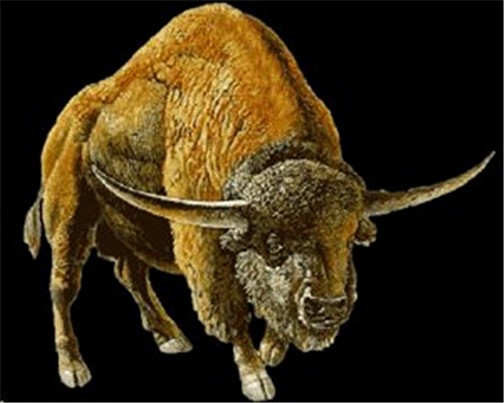
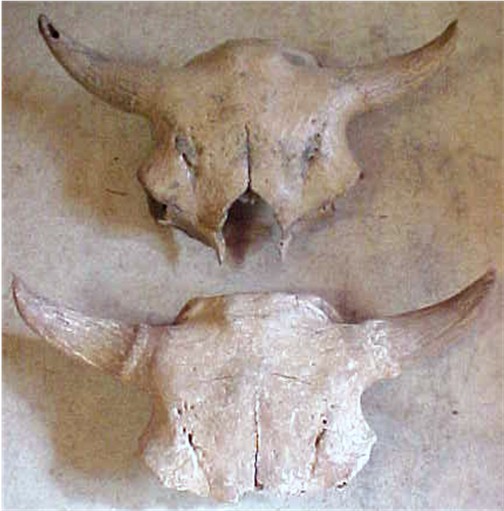
It is
interesting to note that it is believed that prior to
the commercial buffalo hunts which occurred in the
post-Civil War years, the primary cause of death other
than natural causes were iced-over rivers. Based on
recoveries of skeletal remains, thousands of bison
drowned when the enormous weight of herds crossing
frozen rivers caused the ice to give way, and the
animals were swept away to their death. This would
explain why so many of these remains are found in the
banks and sandbars of rivers and their drainages.
The configuration of these skulls and the set of the horn
cores in relation to the cranium identify these skulls as
the older Bison Occidentalis as opposed to the
modern buffalo we know today. One of the most common
indicators of the Occidentalis is the position of
the horn core tips – rather than being in line with the
face of the skull as found on a modern buffalo skull,
when a string or straight edge is placed from tip to tip
on the horn cores of an Occidentalis skull there
is a gap of as much as 2” between the resulting plane
and the face of the skull. Another indicator is the
span between the tips of the core, an adult measuring in
the 26-29” range.
These Bison Occidentalis skulls would be nice
pieces to display with a collection of early flint points
or any collection of early frontier artifacts.
I have the following skulls available, each described
below with accompanying photographs.
|
|
NO. 1
ICE AGE “BISON OCCIDENTALIS” BUFFALO SKULL
– ORIGINALLY DISCOVERED IN NEBRASKA:
This skull
was reportedly discovered in Nebraska, in a creek or
river bank, sometime in the late 1960's or early
1970's.
Unfortunately, nothing more is known about the recovery.
This skull retains more of its profile than the New
Mexico skull shown below, to include a complete ocular
orbit on the right side and partial ocular orbit on the
left which retains the majority of the ocular rim. The
horn cores retain their profile with minimal wear at the
tips, and it retains much more of the facial surface
than does the New Mexico skull.
This skull has the appropriate orientation of the horn
cores to the face of the skull with a gap between the
face and the core tip to tip line being 1 ½” and a span
from tip to tip of 23”.
This skull has been coated with some sort of stabilizing
agent, leaving the skull with a pleasing overall aged
ivory color. It is very stable with no weakness or
movement at the skeletal joints, and it displays quite
well.
(0101) $850
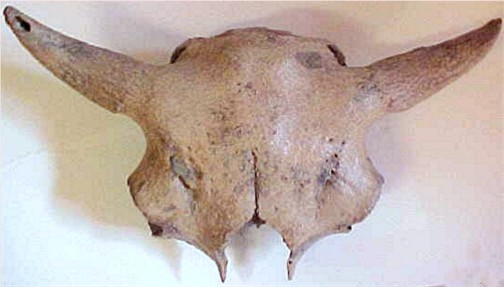 |
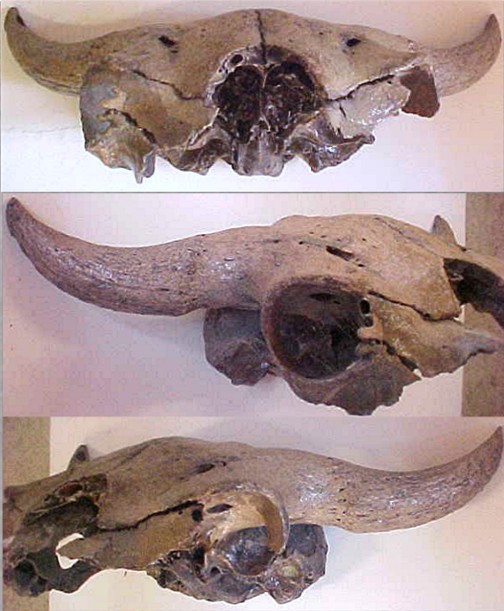 |
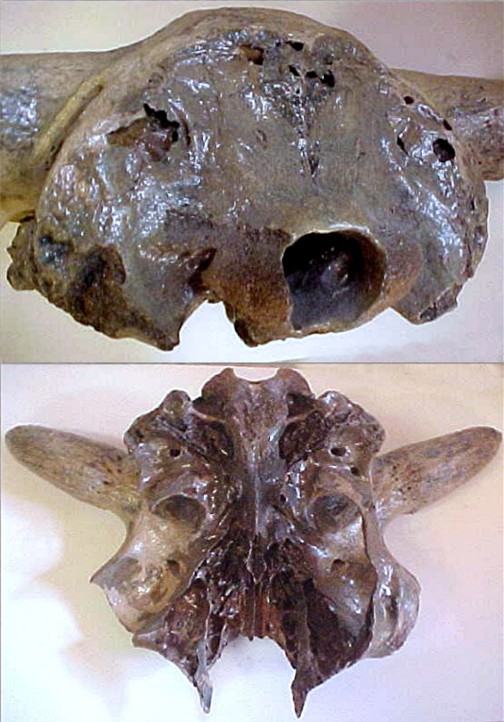 |
|
COMPARATIVE PHOTOGRAPHS OF THE NEBRASKA AND NEW MEXICO
SKULLS
The two skulls are very similar is width and mass. I
suspect, based on my experience aging modern wildlife
skulls, that the Nebraska Bison died at an younger age
than did the New Mexico Bison. The facial cranial seam
and the eye ducts on the New Mexico skull are filled in
more than on the Nebraska skull and this filling is
normally seen as a function of the aging process.
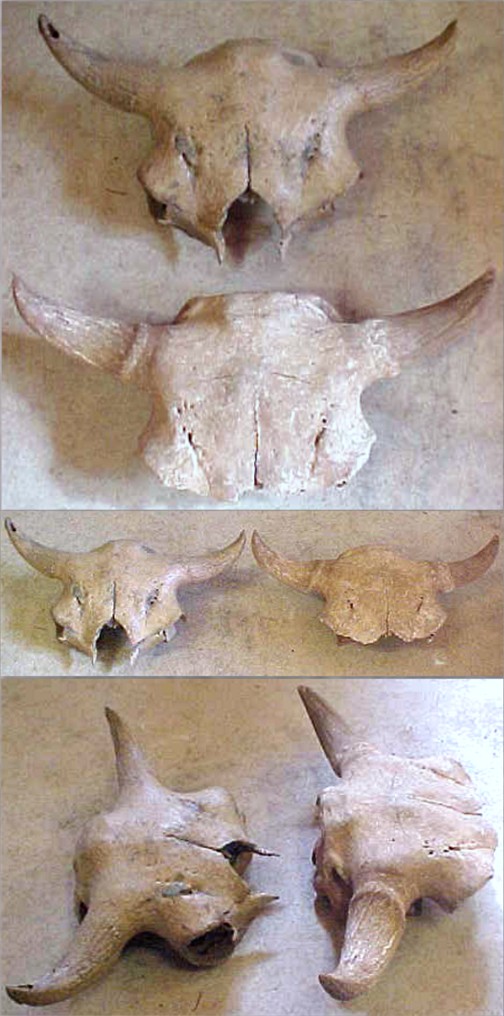
|
|
NO. 2
ICE AGE “BISON OCCIDENTALIS” BUFFALO SKULL
– ORIGINALLY DISCOVERED IN NORTHERN NEW MEXICO:
This skull was found in northern New Mexico in a dry
wash or arroyo sometime prior to 1970.
Unfortunately, nothing more is known about the recovery.
This skull has the appropriate orientation of the horn
cores to the face of the skull with a gap between the
face and the core tip to tip line being 1 ½” and a span
from tip to tip of 24”. There appears to have been some
erosion of the core tips and therefore some loss of the
span, and too, this may have been a juvenile or
sub-adult animal, and the skull therefore not as large
as a fully matured adult.
The bone has an almost petrified quality to it, with an
even ivory-colored patina and a naturally polished sheen
overall. The bone is solid with no weak points and no
fragile areas. (0963) $750
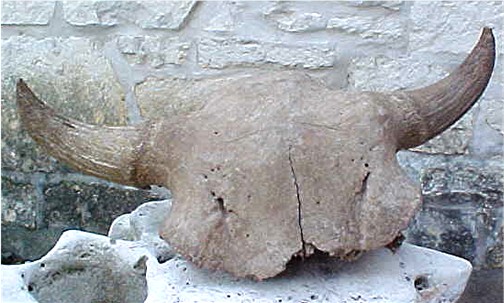 |
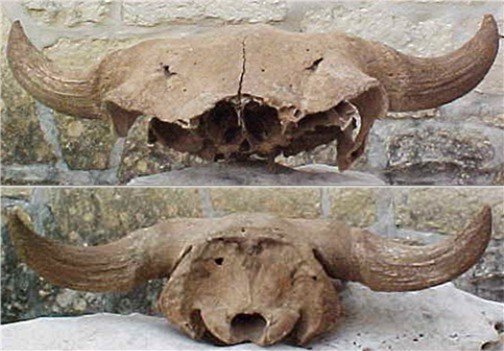 |
 |
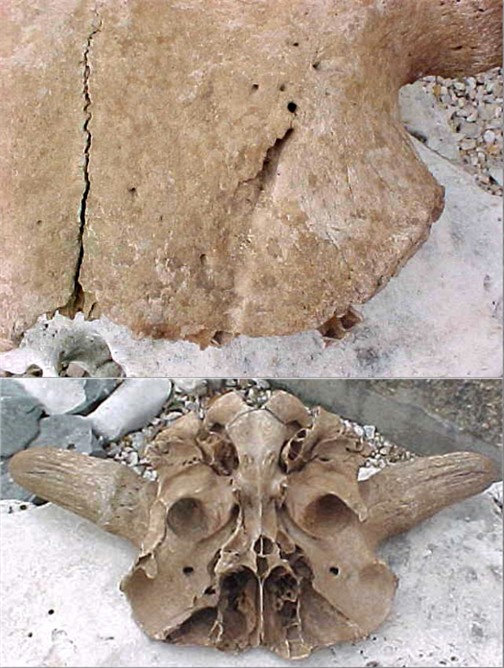 |
|
NO. 3
ICE AGE “BISON OCCIDENTALIS” BUFFALO SKULL –
ORIGINALLY DISCOVERED NEAR MILES CITY, MONTANA:
This skull was
reportedly discovered in a dry wash near Miles City,
Montana sometime in the 1970's.
This skull retains a nice
profile and retains good mass considering how long it
was buried. It retains the full brain cavity, the upper
arcs of both of the ocular orbits, and both horn cores,
which retain their profile with minimal wear at the
tips. One core tip was broken at some point and has
been restored in place.
This skull has the appropriate orientation of the horn
cores to the face of the skull with a gap between the
face and the core tip to tip line being 2 ¼” and a span
from tip to tip of 24 ½”. The height of the tip to tip
line from the face of the skull is one of the most
dramatic that I have noted.
The skull has a pleasing
overall naturally aged ivory color. It is very stable
with no weakness or movement at the skeletal joints, and
it displays quite well. (0459) $350
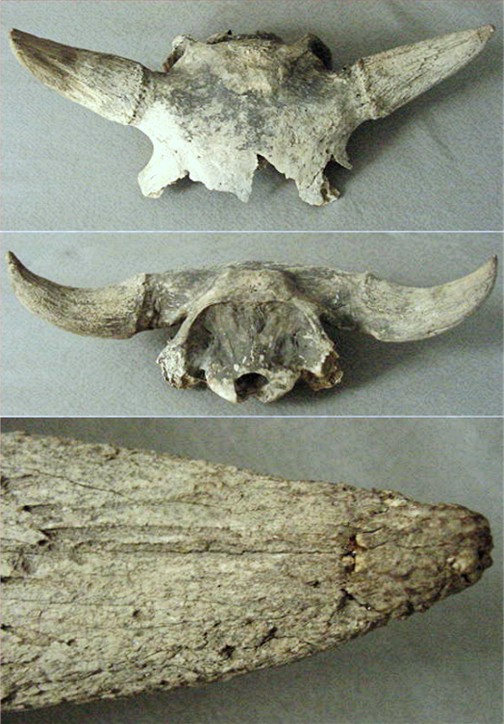 |
|
|
|
|
|
|
|
|
|
|
|
|
|
|
|
|

